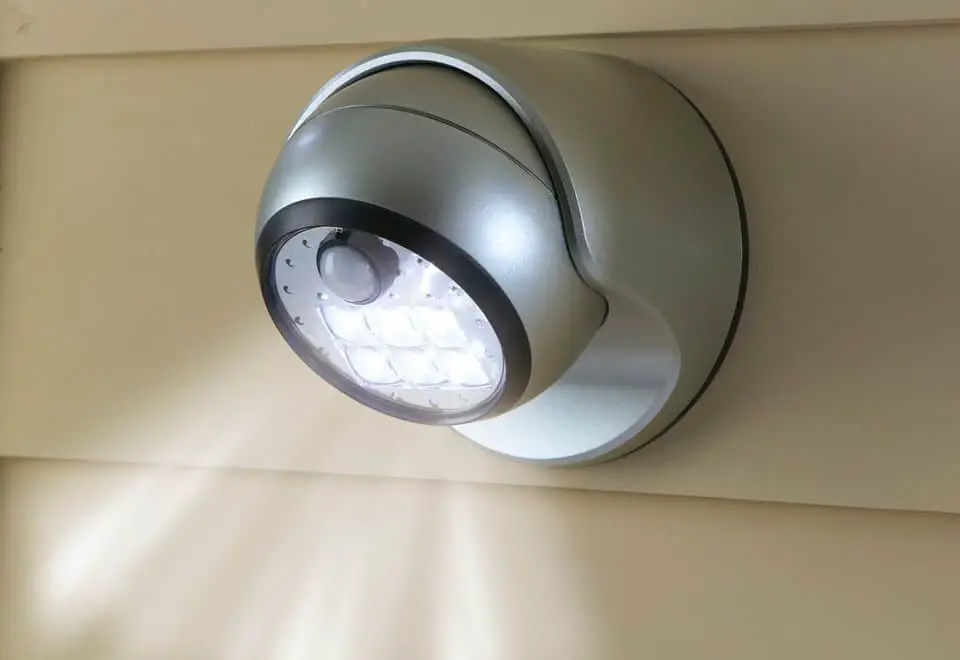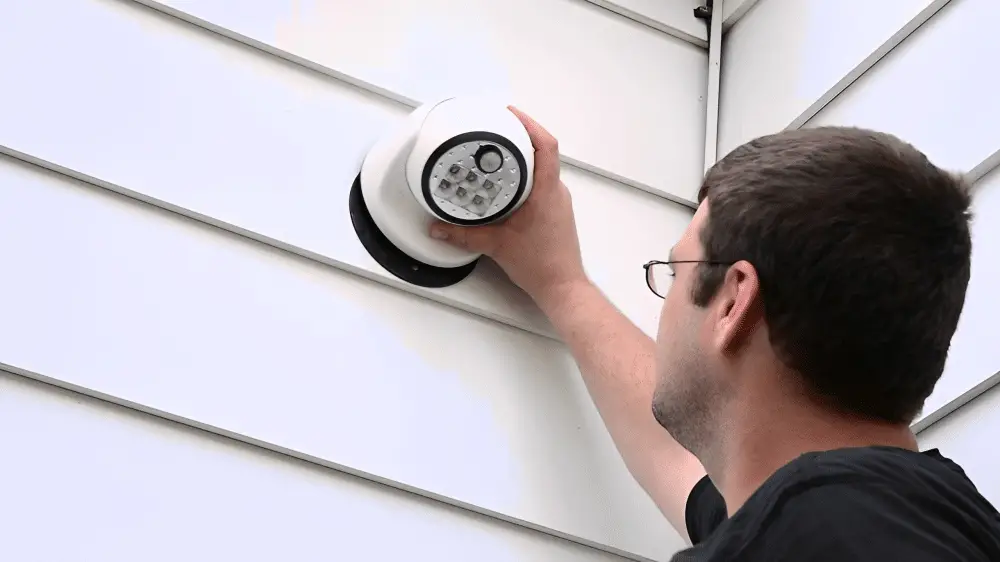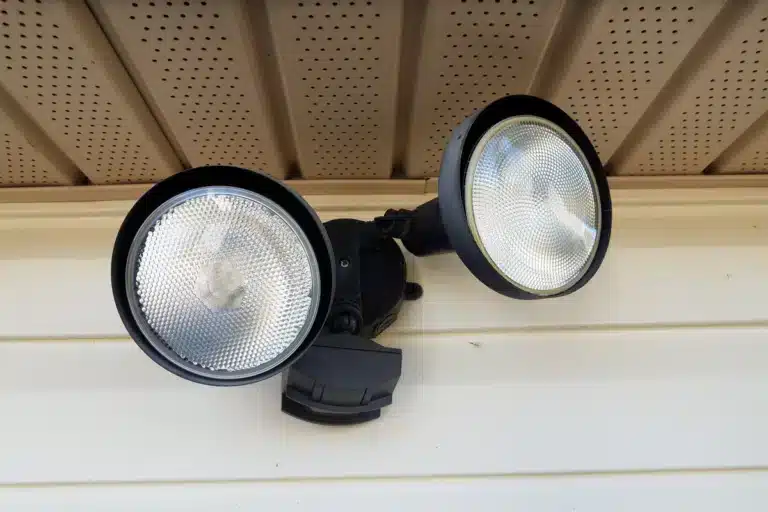Introduction
How To Convert Regular Light To Motion Sensor: Converting a regular light to a motion sensor light is a practical and cost-effective solution to enhance the functionality and energy efficiency of your existing lighting setup. A motion sensor can automate your lights to turn on only when motion is sensed, saving energy and convenience. This guide will outline the steps involved in converting a regular light to a motion sensor, allowing you to enjoy hands-free illumination in various areas of your home or workplace.
Converting a regular light to a motion sensor light involves the installation of a motion sensor switch or module. These devices are designed to detect motion and trigger the connected light fixture accordingly. By retrofitting your existing light with a motion sensor, you can eliminate the need for manual switch operation and ensure that the light turns on automatically when someone enters the detection range. Motion-activated lights save electricity and offer protection.
The process of converting a regular light to a motion sensor light starts with selecting the appropriate motion sensor for your specific requirements. There are various types of motion sensors available, including infrared (IR), microwave, and dual-technology sensors. Each variety is advantageous and suitable for diverse uses. When picking a motion sensor, consider its detection range, sensitivity, and light installation space. To enable seamless integration, the motion sensor and light fixture must be compatible.

Can you add a motion sensor to a normal light?
The basic steps involve choosing the ideal placement for the sensor, before wiring it into the electrics of the existing light.
Yes, you can add a motion sensor to a normal light to make it more energy-efficient and convenient. A motion sensor detects movement within its range and triggers the light to turn on or off automatically, depending on the setup.
The process of adding a motion sensor to a regular light involves a few steps. First, you need to choose the right motion sensor that suits your needs, ensuring it is compatible with your existing light fixture and wiring. There are various types of motion sensors, including infrared, microwave, and dual technology sensors, each with its own sensitivity and range.
Once you have the appropriate sensor, turn off the power to the light from the electrical panel, remove the existing switch, and install the motion sensor in its place. You may need to follow specific instructions provided by the manufacturer or hire a professional electrician for safety and proper installation.
How do you turn an outdoor light into a motion sensor light?
Simply unplug the light’s hot wire. Motion sensor power will replace breaker power for the lamp. After installation, it controls your light.
Converting an outdoor light into a motion sensor light is a relatively simple process that can greatly enhance the security and convenience of your home. Follow these steps to accomplish the transformation:
Choose the right motion sensor
Choose a suitable motion sensor first. Make sure it’s outdoor-rated and suitable with your light (LED, incandescent, CFL).
Gather the necessary tools
You’ll need basic tools such as a screwdriver, wire stripper, wire connectors, and possibly a drill if you need to mount the sensor.
Turn off the power
Locate the circuit breaker or fuse box and turn off the power to the outdoor light fixture you’re working on to prevent any accidents.
Remove the existing light fixture
Unscrew and remove the current outdoor light from its mounting bracket carefully.
Connect the motion sensor
Follow the instructions provided with the motion sensor to connect the wires. Typically, you’ll need to connect the sensor’s wires to the corresponding wires in the light’s electrical box.
Mount the motion sensor
If your motion sensor requires mounting, secure it in a suitable location, preferably where it can detect movement effectively.
Attach the light fixture
After connecting the wires and securing the motion sensor, attach the outdoor light fixture to the mounting bracket.
Adjust the settings
Many motion sensors come with adjustable settings, such as sensitivity and duration of illumination. Configure these settings according to your preferences.
Test the setup
Turn the power back on and test the motion sensor light by walking in front of it. Ensure it activates and deactivates correctly based on movement.
Fine-tune as needed
Adjust the sensor’s position or settings if required to optimize its performance.
Remember to check local regulations and safety guidelines when working with electrical installations. If you are not comfortable doing it yourself, consider hiring a qualified electrician to ensure a safe and efficient installation.
Can I replace a light switch with a motion sensor?
Any normal single-pole wall switch can be used instead of a motion sensor switch. Different products have different wiring layouts. Standard switches don’t usually connect to the neutral circuit wire, but some switches do. These switches have a neutral wire that is linked to power the LED.
Yes, you can use a motion sensor instead of a regular light switch. This is more handy and saves energy. When motion is detected in the area, motion sensor switches turn on the lights instantly. After a set amount of time, the lights turn off. This is helpful in places that aren’t used very often or where you want to save energy.
To replace a light switch with a motion sensor, follow these general steps:
Safety first
Turn off the power to the circuit at the main electrical panel to avoid any accidents while working on the switch.
Remove the old switch
Unscrew the faceplate and the switch itself from the electrical box in the wall. Carefully disconnect the wires from the old switch.
Select the appropriate motion sensor switch
Occupancy sensors turn lights on and off automatically, while vacancy sensors require manual activation but turn off before motion.
Wiring
Follow the motion sensor switch’s wiring schematic and manufacturer’s instructions. You’ll usually connect the motion sensor’s wires to the switch’s (black to black, white to white, etc.).
Mounting
Secure the motion sensor switch to the electrical box and install the faceplate.
Test
Turn the power back on and test the motion sensor switch to ensure it functions correctly.
Always consult the specific instructions provided by the motion sensor switch manufacturer and, if you’re unsure about electrical work, consider hiring a licensed electrician to do the installation.

Can a bulb be motion sensor?
Smart light bulbs with motion sensors can be controlled remotely. When it senses activity in the room, it can switch on and off automatically or at particular times of day.
Yes, bulbs can have motion sensors. Many call these light bulbs “motion sensor bulbs” or “motion-activated bulbs.” They detect movement and turn on or off automatically.
Motion sensor lamps improve home security, energy efficiency, and convenience. Motion-activated lights in driveways, paths, and entryways deter intruders by alerting homeowners to any unexpected movement. This feature can help save electricity indoors by turning lights on when someone enters and off when the room is empty.
Most motion sensor bulbs use passive infrared (PIR) technology to detect changes in infrared radiation emitted by warm objects, such as humans or animals. When motion is detected, the bulb’s internal circuitry triggers the light to turn on.
How much does it cost to get motion sensor lights?
Smart motion-sensor lights combine these two security features into one. You can expect to pay around $100 to $300 per light. Factoring in installation, you’re looking at a final cost of around $200 to $500.
Brand, features, quality, and illumination type affect motion sensor light prices. Motion sensor lights are available in many price points to suit different budgets.
Simple freestanding motion sensor lights or small LED motion sensor light bulbs for existing fixtures cost $10 to $20 each. Although cheaper, these may have less features and shorter lifespans.
For higher quality and more advanced options, you can expect to pay between $20 to $50 per light. These might include better sensors, adjustable settings, and longer-lasting bulbs.
For more elaborate setups, like outdoor floodlights with advanced motion detection capabilities, prices can range from $50 to $150 or more per unit, depending on the brand and specifications.
What makes a light motion sensor?
Passive Infrared
Lighting technology typically uses passive infrared motion sensors to view things. The passive system waits for movement or heat before sending anything.
Light motion sensors, often called motion detectors or occupancy sensors, detect movement and turn on lights or other electrical devices. Energy conservation, security, and convenience are crucial in homes and businesses with these sensors.
The key components of a light motion sensor include:
Infrared or Passive Infrared (PIR) Sensor
The most common type of motion sensor, it detects changes in infrared radiation caused by body heat or movement. When a warm body moves within its field of view, the sensor registers the change and triggers the light.
Ultrasonic Sensor
It emits ultrasonic waves and measures the reflection time to detect movement. When an object enters its monitored area, the sound waves are disturbed, and the sensor activates the light.
Microwave Sensor
This sensor emits continuous microwave signals and measures the reflected signals from moving objects. It offers broader coverage but can be sensitive to small movements.
Dual Technology Sensor
Combines PIR and microwave technology to reduce false triggers and increase accuracy.
Light Sensor (Optional)
Motion sensors with ambient light sensors control lights dependent on lighting.
Motion sensors help security lighting, automatic doors, and energy-efficient lighting systems operate only when needed, conserving energy and improving safety. Modern smart lighting systems require their versatility and reliability.
How are motion sensor lights powered?
Power source
You can choose battery-operated, wired, or solar-powered lights. Multiple-source combo lights are also available.
Motion sensor light power depends on design and purpose. Electricity, batteries, or solar power most motion sensor lights.
Electricity
Motion sensor lights are often hooked into a building’s or outdoor electrical system. They usually run on mains power. These lights are common in homes, businesses, and public locations.
Batteries
The installation of battery-powered motion sensor lights is more flexible. These lights are utilized when electricity wiring is impractical or expensive. Outdoor sheds, garages, and camping and emergency lighting use battery-powered motion sensor lights.
Solar Energy
Eco-friendly solar-powered motion sensor lights charge batteries using solar energy. Powering the light at night, solar panels on its surface capture sunlight during the day. These lights work well in gardens, paths, and remote regions with lots of sunlight.
How do motion sensors work for lights?
Motion sensors can be triggered by light. Turning on the light rapidly changes the electromagnetic spectrum sensed by light-based detectors like PIR or area reflective sensors. Change can be a movement.
Lighting systems employ motion sensors to activate lights when they sense movement. They work efficiently and conveniently for many applications due to a few basic principles.
PIR is used in most motion sensors. All objects above absolute zero generate infrared radiation that PIR sensors detect. The sensor turns on the lights when a warm object, such a person or animal, enters its range and modifies the infrared radiation pattern.
A light motion sensor has a PIR sensor, a lens to focus infrared radiation on it, and electronic circuitry to process the signal and activate the light switch. Adjusting the sensor’s range and sensitivity is common.

Conclusion
Converting a regular light to a motion sensor light is a simple and cost-effective way to enhance the convenience, energy efficiency, and security of your lighting setup. Follow a few steps to turn your light fixture into a motion sensor-activated one that illuminates automatically when motion is detected.
Choose a compatible motion sensor switch or module to convert a conventional light to a motion sensor light. Options include freestanding motion sensors and integrated sensor switches. Make sure your sensor fits your light fixture and can withstand the bulb’s power.
Install the motion sensor in the light circuit after selecting it. Turning off the power, removing the switch or fixture cover, and connecting the motion sensor per manufacturer’s instructions is common. Follow electrical safety precautions and consult an expert if you have questions about installation.

